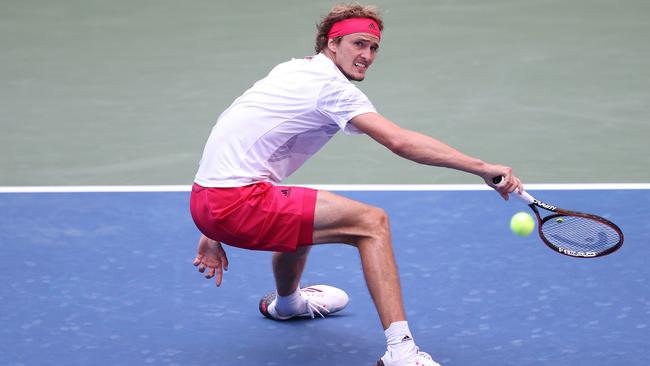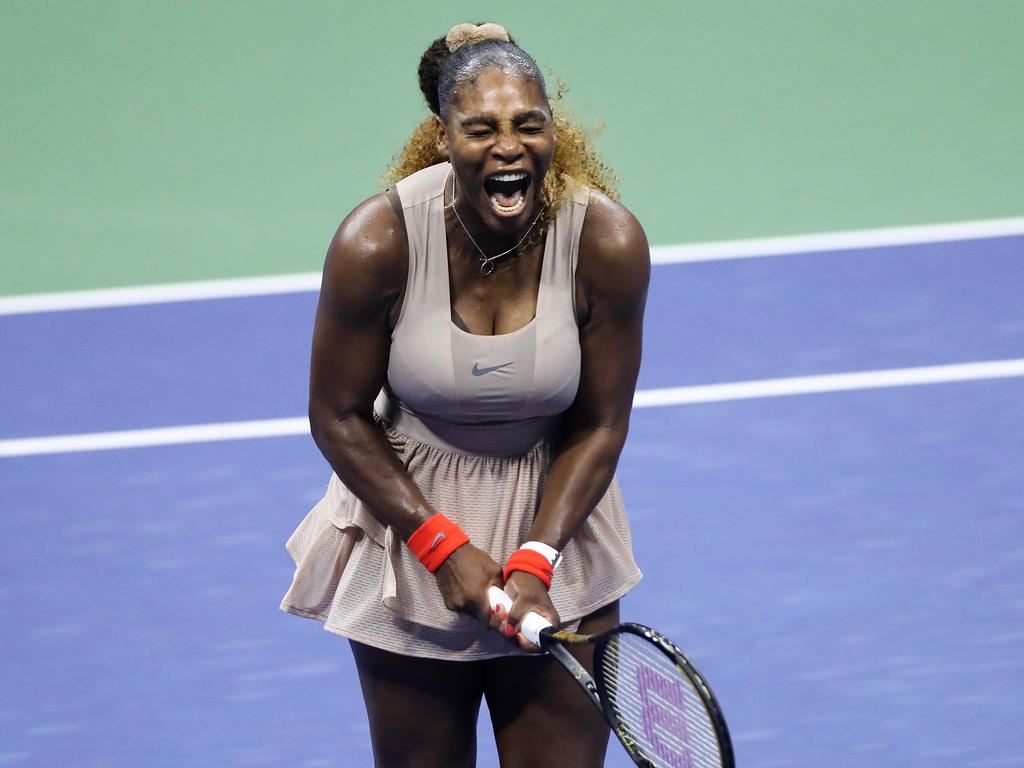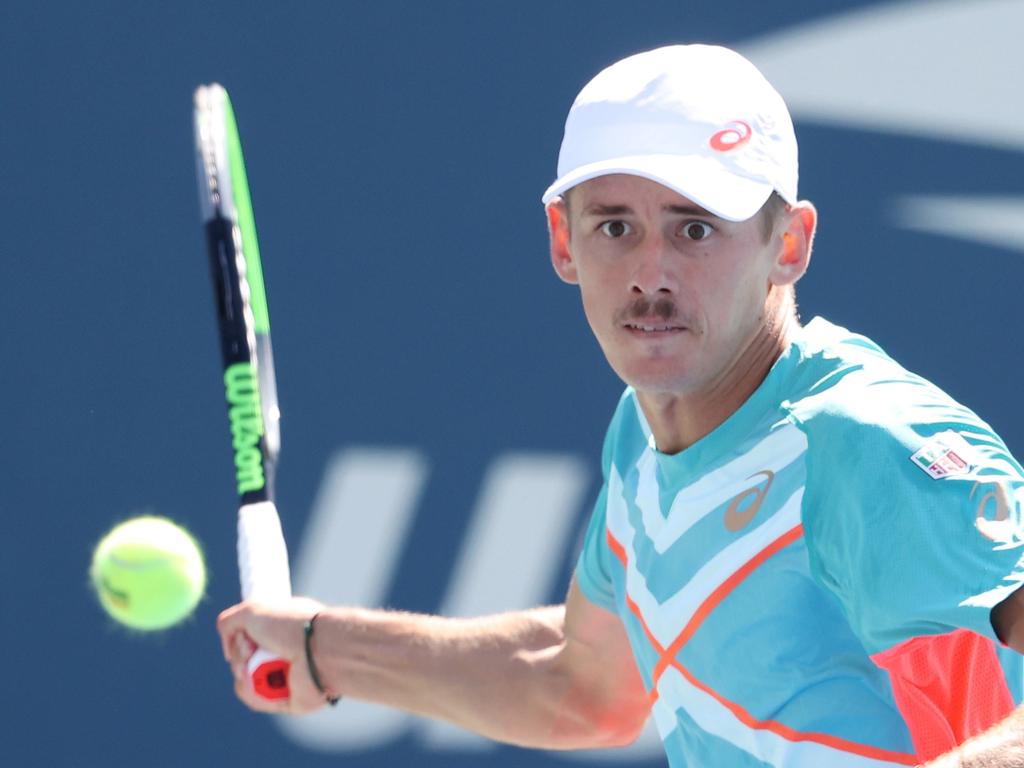US Open 2020: At last, a grand slam for the shadowed generation
To at last guarantee a first male grand-slam champion born in the 1990s, it has taken an extraordinary chain of events.

To at last guarantee a first male grand-slam champion born in the 1990s, it has taken an extraordinary chain of events. A global pandemic discouraged Rafael Nadal from defending his US Open title, two knee surgeries ruled Roger Federer out of a trip to New York and Novak Djokovic was removed from the draw by default after hitting a ball into a female line judge.
This surreal closed-doors tournament was billed as an opportunity for a much-needed fresh name on a major trophy and it became a certainty last Sunday when the 17-times grand-slam champion Djokovic was thrown out. The ramifications immediately reverberated around the private locker rooms inside Arthur Ashe Stadium. “I think the Novak news shocked us all,” Alexander Zverev, the No 5 seed from Germany, said. “Obviously for us younger guys we see that as a massive opportunity, but we have to put our head down and focus on ourselves.”
This is the first time since Wimbledon in 2003 — the tournament at which Federer won the first of his 20 grand-slam titles — that none of the men’s semi-finalists have won a major before. Zverev, Dominic Thiem, Daniil Medvedev and Pablo Carreno Busta have been knocking on the door for some time and finally it has opened to put one of the sport’s most prestigious trophies — and a cheque for $US3m ($4.1m) — within touching distance.
This unprecedented opportunity has brought a new form of pressure for those remaining in the draw after the exit of Djokovic, with some of the matches since being incredibly edgy. Zverev’s five-set win in the quarter-finals against Borna Coric, the No 27 seed from Croatia, was one of the worst spectacles seen at this stage of a grand slam while the 21-year-old Canadian Denis Shapovalov cancelled out 76 winners with 77 unforced errors in his five-set defeat in the same round by Carreno Busta.
“I don’t think any of the players have been in this situation often,” Shapovalov said. “There’s a lot of dark horses out there. It’s anybody’s slam. It’s very exciting for tennis but it’s causing a lot of nervous matches.”
Zverev acknowledges that the second week of this tournament has felt like no other. The 23-year-old has long been considered a future grand-slam champion — he is the only active player other than Federer, Nadal, Djokovic and Andy Murray to win three ATP Masters titles — but it was not until January of this year that he reached the semi-final of a major for the first time, at the Australian Open. Of the four remaining in New York, he possesses the most power, although he is wildly inconsistent with his serve.
“It’s different,” Zverev, 23, said. “We’re going to have a new grand-slam champion. We don’t know who it is, but I know that all the young guys are hungry for it. It’s going to be interesting.”
As the No 2 seed, Thiem is the favourite. The 27-year-old Austrian has reached three grand-slam finals but has come up against formidable opposition each time in the 12-times French Open champion Nadal at Roland Garros over the past two years and the eight-times Australian Open winner Djokovic in Melbourne this year.
“There’s no Roger, Rafa and Novak, but there is Daniil, Sascha (Zverev) and Pablo now,” Thiem said. “They are three amazing players. Every one of us deserves this first major title. Once we step on the court, the other (big) three are forgotten.”
Thiem’s semi-final against Medvedev, the No 3 seed from Russia, is the most intriguing. Both are strong all-rounders on the court and there will probably be many bruising baseline exchanges. Medvedev, 24, is renowned for his endurance, as we saw in last year’s US Open final when he battled back from two sets down to force a deciding set against Nadal.
“I saw videos of it on YouTube,” Thiem said. “It was one of the better slam finals ever. I would say that he (Medvedev) comes very close to the big-three players in terms of how he can play his top level, for no matter how long — four, five, six hours. That’s going to be really difficult. But I’m looking forward to it. I think it’s going to be a big stage, even if it’s without fans.”
The dark horse is Carreno Busta, who directly benefited from the default of Djokovic as the player who was standing on the opposite side of the net at the time. The No 20 seed from Spain is no spring chicken at the age of 29 and he is not particularly flashy on the court, but he has a steady game that can wear down his opponents. This could pose problems for Zverev, who has spent almost two hours more on court this fortnight.
There is a myth that Carreno Busta is a clay-court expert. “If clay didn’t exist, (the) dude wouldn’t of (sic) even been close to (the) top 50,” Nick Kyrgios tweeted last week. But this is the second US Open semi-final that Carreno Busta has reached — the first was in 2017 — and he has won three of his four ATP tour titles on hard courts. Not for the first time, Kyrgios has been made to look foolish.
The Times






To join the conversation, please log in. Don't have an account? Register
Join the conversation, you are commenting as Logout